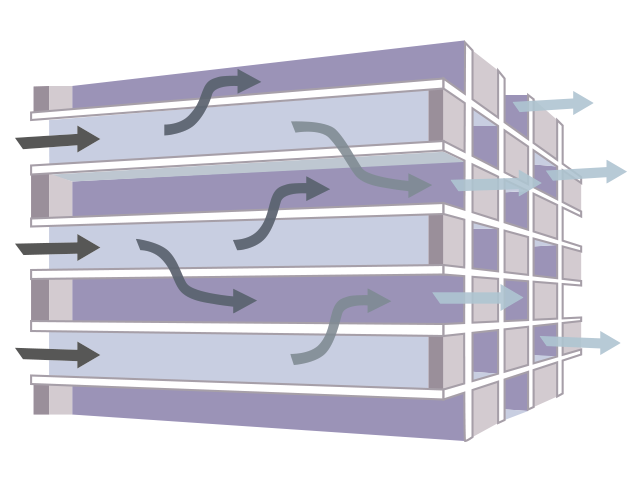DPF stands for Diesel Particulate Filter.
DPFs are devices which physically remove air borne particles from the exhaust gas of a diesel engine. Most of these particles are made up of carbon-based ‘soot’. Hence, DPFs are also known as ‘soot traps’. In this way, they act to reduce the harmful emissions produced by diesel engines (e.g. ‘black smoke’).
How does a DPF work?
DPFs are usually made from ceramic materials, although sintered metal and disposable paper versions are used in some applications. They are positioned downstream in the exhaust system to trap harmful soot particles. A typical design consists of narrow channels which are blanked off at alternate ends (see diagram). This ‘wall flow’ design forces the exhaust gases to pass through the long walls which are impassable for the soot particles, thus filtering them out. Over 90% of particulates are removed in this way.

Exhaust gas entering from the left is forced to pass through the walls of the filter, leaving behind any solid particulates
Once trapped, however, the soot will quickly build up inside the DPF if it is not periodically burnt off – a process known as regeneration. This may be ‘passive’ regeneration, which uses catalysts and the normal heat of the exhaust. Or it may be ‘active’ regeneration, which increases the temperature in the exhaust either through engine management, injecting extra fuel into the exhaust, heating the DPF, or other methods.
Where are DPFs used?
In the UK, DPFs have been fitted to:
- London Buses and other sensitive applications since 2000
- Some PSA (Peugeot Citroen) cars since 2000
- All Cars/Vans (under 3.5 tonne) since 2010 (in order to meet Euro 5 emissions limits)
- All Trucks/Buses/Coaches (over 3.5 tonne) from 2015 (in order to meet Euro 6 emissions limits)
